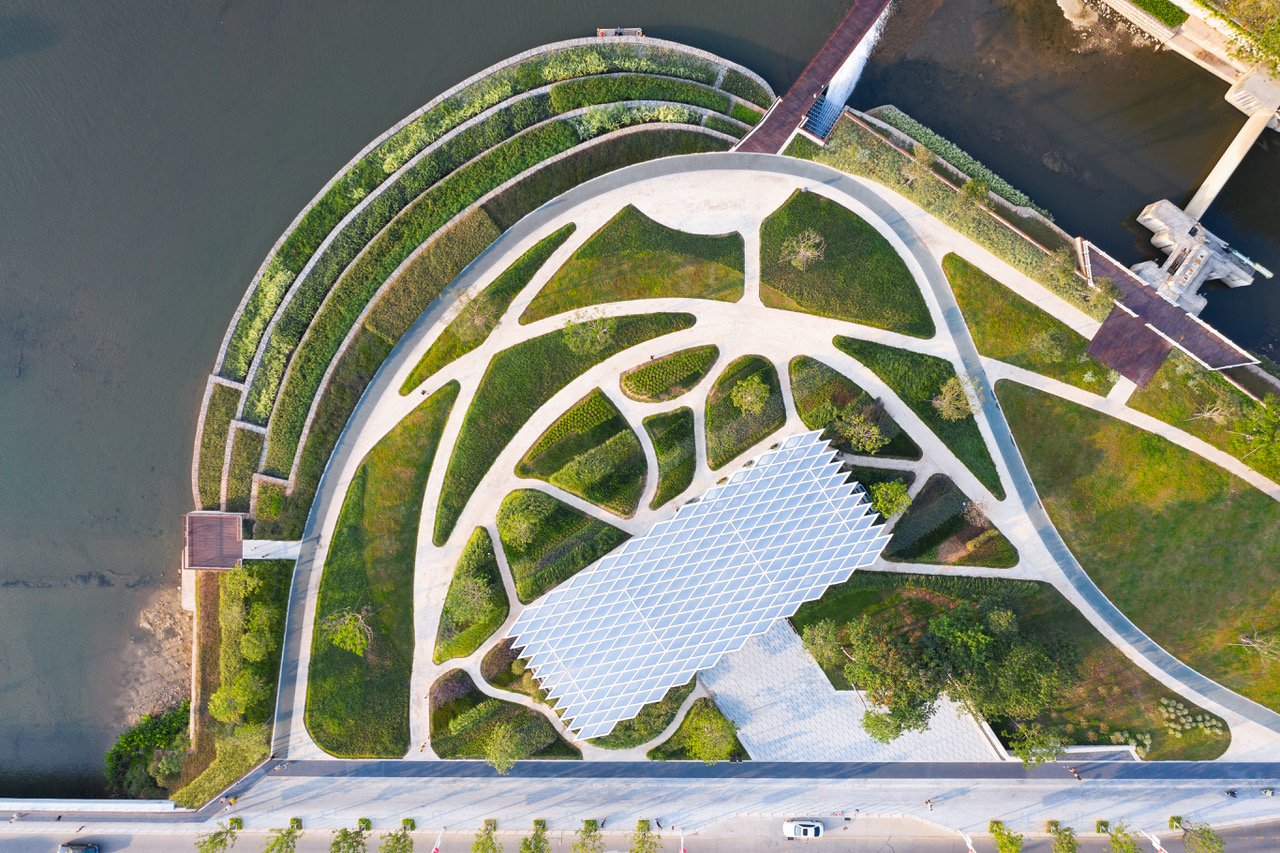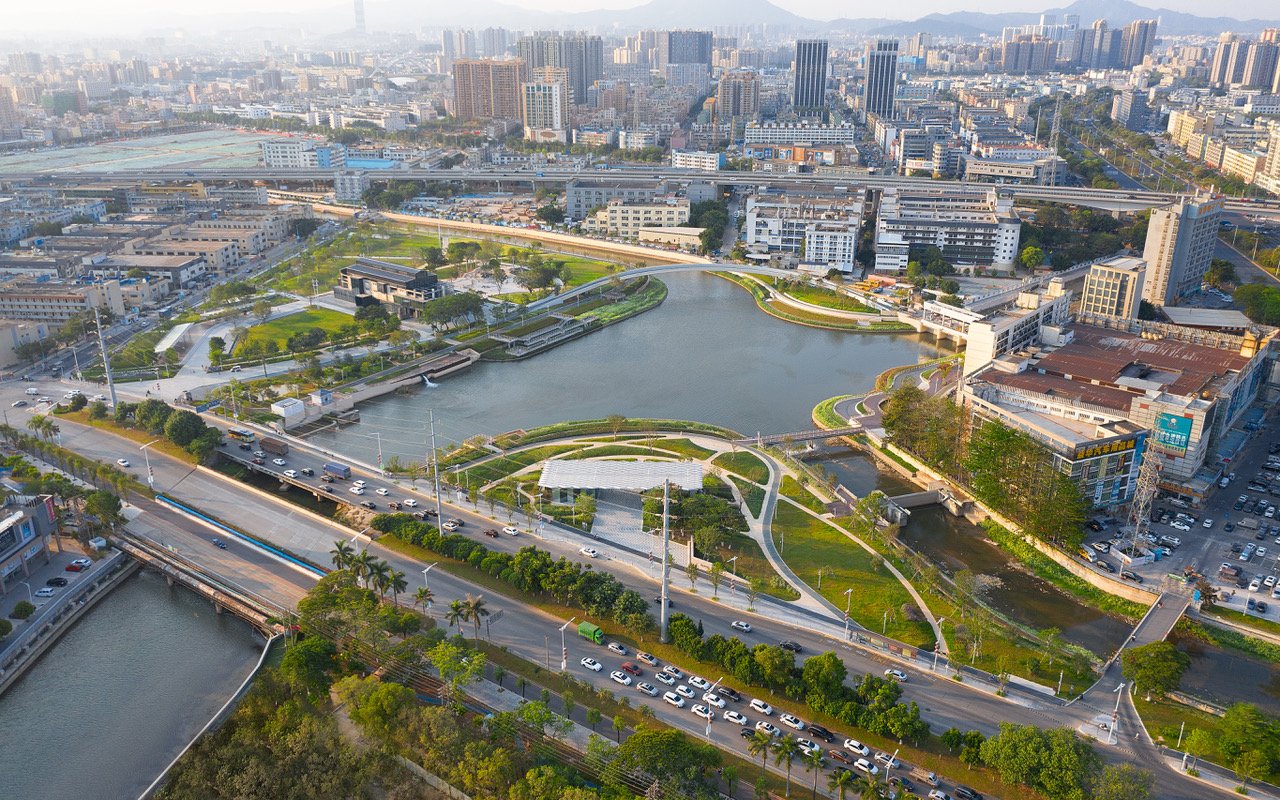From power plant to community park and wetland
Built on the site of a former power plant and its neglected surroundings, Haoxiang Lake Park offers a new wetland connected by a series of bridges and footpaths in Shenzhen, China.
The space surrounding the stormwater retention pond has been redeveloped into an open waterfront park, with the whole project masterplanned by Hong Kong-based landscape studio eLandscript.
Haoxiang Lake Park is located in the Shajing neighbourhood of the Bao’an District and at 13 hectares, it helps solve the community’s demands for open space, as well as social problems caused by rapid city development.
Haoxiang Lake Park designed by eLandscript offers a new wetland connected by a series of bridges and footpaths in Shenzhen, China.
The area had been gradually forgotten by nearby residents due to deteriorating water quality and industrial plants around the lake, but the new, more flexible waterfront attracts and encourages locals to appreciate nature and understand the protection of the water environment.
Combining the ecological management of a stormwater retention pond with new bridge, pedestrian walkways and exhibition hall, the park connects several banks created by the four rivers that feed into the lake with a series of paths and elevated promenades.
Before and after pictures show the improvements the project brings to the area.
An 850-metre pedestrian loop connects these riverside spaces, colliding with the site in different areas to create landscape anchor points such as the Rainbow Bridge, Sluice Overlook, and Flora Trellis Cafe, developed in collaboration with LAAB Architects.
The Rainbow Bridge, a 238-metre curved steel box girder structure, with a maximum span of 77-metres, crosses two rivers to the north of the site. Designed in collaboration with Schlaich Bergermann Partner, it offers the best viewing spot of the park and its surrounding cities, while minimising the bridge’s impact on the river and environment.
Haoxiang Lake Park is located in the Shajing neighbourhood of the Bao’an District.
At the park’s entrance to the south, a traditional oyster-shell wall technique has been used to define the boundary of the site where it meets the road, alongside a paved plaza leading to the cafe.
ARCity have been the collaborators for the regeneration of the former Shaijing power plant, which has become the Oyster Culture Centre. This includes the creation of an adjacent play area, the Oyster Shell Water Maze, and a nearby educational wetland. The ruins of the power plant’s original 1980s structure have been retained and left exposed, with new steel and glass forms inserted to enable the space to be used for local activities and exhibitions.
The park connects several banks created by the four rivers that feed into the lake with a series of paths and elevated promenades.
Haoxiang Lake Park has been designed with environmental sustainability front of mind. A stormwater retention pond has played an important role in flood control and pollution interception, and evaluation of flooding analysis has led to the original 600-metre long revetment vertical retaining wall being transformed into an ecological gabion-wall cascade wetland, topped with reeds to create new banks that can be safely submerged during flooding.
This purifies the water and creates an ecological community habitat, provides multi-dimensional hydrophilic possibilities including the Elevated Reedbank Promenade, and the rock promenade that can be submerged under the flood.
The area had been gradually forgotten by nearby residents due to deteriorating water quality and industrial plants around the lake.




